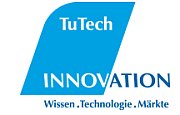|
|
One Step Forward for eParticipation: the PEP-NET Summit28. September 2010 – 17:24 by Rolf Luehrs |

Lively discussion at the PEP-NET Summit
At last week’s PEP-NET Summit we set out to move European eParticipation one step forward.
The diversity of the audience and the broad range of projects that were shown in the presentation corners emphasised again that eParticipation is multifaceted, and that we should move beyond discussing whether or not digital technology can improve participation to thinking of eParticipation as a toolkit with a variety of tools for different purposes. Just as it is no longer enough for digital disciples to set up a free blog and Twitter account in the hope that eParticipation will take care of itself, neither is it right to claim that eParticipation has nothing to offer.
Whether ePetitions, eVoting, discussion forums, online consultation portals, online participatory budgeting or one of the many other eParticipation interventions, each intervention has its own particular purpose. The differentiated approach that I talked about in my speech means thinking carefully about which of these tools best serves your objectives.
This means being open to technological change and the benefits it can bring in terms of efficiency, wider engagement of citizens, and better policy-making; but also being aware of the limitations and how these can be overcome. With the emphasis very much on discussion and networking between the sectors, the PEP-NET Summit was a catalyst in this process.
The summit opened with a welcome address from Bernd Reinert, Staatsrat at the City of Hamburg, who spoke about Hamburg’s experience of successful eParticipation projects. He also gave a compelling account of the history of the Warehouse Quarter in which the Summit was held: the area was once a storage space for spices, carpets, coffee and all manner of imports that would then be distributed to retailers. (I think that is symbolic of this PEP-NET Summit, which took big ideas and high-level policy and unpacked them into smaller, “bite-size” pieces for practical application by end users.)Thanassis Chrissafis, from the European Commission, gave an overview of the eParticipation in Europe in his keynote speech “European eParticipation Developments”. He addressed the issue of the state’s role in the 21st century, noting that the state used to fulfil functions that today are clearly within the private sector - such as supplying salt.
Morten Meyerhoff Nielsen, from the Danish National IT and Telecom Agency, presented some figures from research in Denmark relating to the use of social media in government and politics. He observed, amongst other things, that most eParticipation initiatives relate to local issues whereas the EU - the highest instance of government - funds the most. Additionally, research on the attitudes of MEPs towards social media found that although they are aware of them, they still see conventional channels as more important for gaining votes. He went on to name six ways in which government could help ensure that eParticipation happens, summarising them with the keywords “guardian,” “enable,” “key,” “empower,” and “necessary”. You will have to look at his slides for the full picture …
Following the lunchbreak and the hive of activity around the presentation corners, Anke Domscheit-Berg, of Microsoft Germany, and Paul Johnston, Cisco, gave their speeches.
Anke Domscheit-Berg, Director of Government Relations at Microsoft Germany and a convenor of Government 2.0 Camp, gave an introduction to Government 2.0 with some analysis of the implications of modern communications technologies - summarised by the three pillars of transparency, collaboration and participation — and examples from across the world of how they have been used to promote participation in politics and government.
Paul Johnston gave an amusing yet insightful account of how policy-makers and citizen activists view eParticipation, arguing that for eParticipation to succeed, it needs to make the whole policy process more transparent and ultimately improve it, offering useful results for policy-makers as well as giving concerned citizens the opportunity to participate in government.
Presentation Corners and Discussion
We intentionally gave high priority to discussion in the Summit because we wanted to make this as interactive as possible. So during the breaks we had 16 “presentation corners”, many of which ran in parallel, which created a busy atmosphere of discussion and sharing of ideas. Some had a larger audience, others were smaller discussions between two or three people. One presentation corner even took place in German when the presenters realised that everyone there was German-speaking. This is just what we envisaged: an informal atmosphere where people had the freedom to make the best use of the time and space available.
The Summit was complemented by a dinner in the evening and a tour of Hamburg the following morning, with a focus on the impact that eParticipation projects have made in Hamburg.
Many of the presentations are being posted on slideshare, so make sure you check back to remind yourself of what went on. A big thank you to all who participated, to the City of Hamburg for convening the event, and to Richard Wilson of izwe for moderating!
NB: You can find copies of many of the presentations at slideshare.net/pepnet











4 Responses to “One Step Forward for eParticipation: the PEP-NET Summit”
By Michael Sachs on Oct 6, 2010
The PEP-NET Summit was a great event. Thanks to the organising team!
Here are my notes from the summit: https://tiny.cc/PEPNET-Summit-Sept-2010
Michael, Centre for E-Government, Krems
By John Heaven (TuTech Innovation GmbH) on Oct 11, 2010
Thanks for your kind praise — glad you enjoyed it and nice to chat with you at the dinner in the evening!
Your notes are very useful to remind everyone of what was said at the Summit, so thanks for those too.